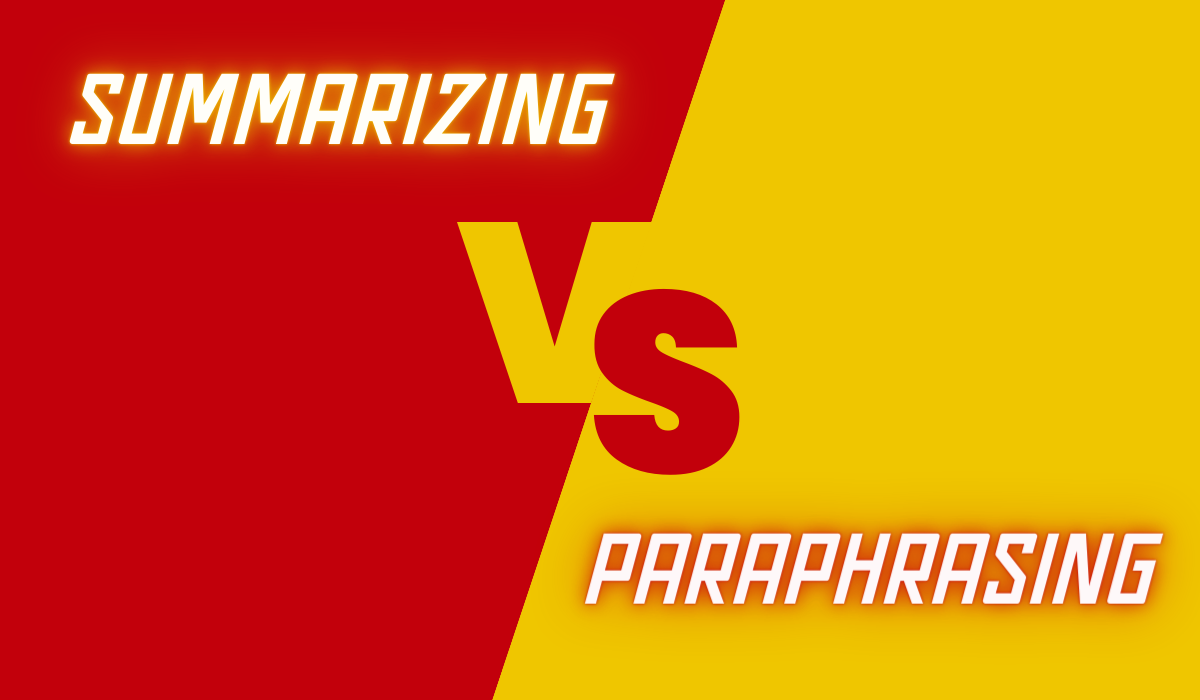Understand the difference between summarizing and paraphrasing. Learn when to use each technique and gain clarity with clear examples. Enhance your writing skills and effectively communicate information!
Explaining the Difference Between Summarizing and Paraphrasing
Introduction: Understanding the difference between summarizing and paraphrasing is essential for effective communication. In this article, we will explain the distinction between these two techniques and provide clear examples to help you grasp the concept. Let’s dive in!

- Summarizing:
- Summarizing involves condensing a larger piece of text into a shorter version while retaining the main ideas and key points.
- It focuses on capturing the essence of the original content without including every detail.
- Summaries are typically shorter than the original text and provide a concise overview.
Example: Original Text: “The sun is the star at the center of our solar system. It provides light, heat, and energy to Earth. Without the sun, life on Earth would not be possible.” Summary: “The sun is the center star of our solar system, providing light, heat, and energy necessary for life on Earth.”
- Paraphrasing:
- Paraphrasing involves restating the original text in your own words while maintaining the same meaning.
- It aims to rephrase the content without changing the core message or main ideas.
- Paraphrased sentences may have a similar structure to the original but use different words and phrasing.
Example: Original Text: “The internet has revolutionized the way we communicate and access information. It has made the world more connected and provided opportunities for global collaboration.” Paraphrase: “The internet has transformed the methods of communication and information retrieval. It has increased global connectivity and opened doors for worldwide cooperation.”
- When to Use Each Technique:
- Summarizing is useful when you want to provide a concise overview of a longer piece of text or when you need to capture the main ideas quickly.
- Paraphrasing is beneficial when you want to rephrase information in your own words while maintaining the original meaning or when you need to avoid plagiarism.
- Clear Distinction:
- Summarizing focuses on condensing information, while paraphrasing emphasizes rephrasing the content.
- Summaries are shorter and capture the essence of the original, while paraphrases use different words and maintain the same meaning.
Conclusion: Understanding the difference between summarizing and paraphrasing is crucial for effective communication. Summarizing involves condensing the main ideas into a concise overview, while paraphrasing requires restating the content in your own words while preserving the original meaning. By using these techniques appropriately, you can effectively communicate information and avoid plagiarism.
Also read:
Unlock the Power of Summaries: Dive into a World of Knowledge with DefineSummary.com
